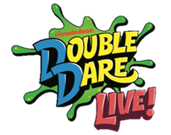Many nonprofits and schools want to increase their donations cost-effectively but lack the expertise or resources to create and host a major fundraising event. A hybrid fundraiser gives you the best of both worlds: an engaging live experience that shares your mission with supporters while leveraging new technology for acquiring donations.
Hybrid fundraising events can be a great addition to traditional donor cultivation activities, being more targeted than telephone campaigns while also providing significant opportunities for engagement through social media sharing.
These types of events enable your nonprofit to do something different from what is expected of you, stand out from your competition and avoid becoming obsolete as time goes on. You get all this while still increasing revenue!
To have a successful hybrid fundraising event, it’s essential to research your options and establish a budget for the event. The next step is to assemble a team of people with different skill sets. You can then create a fundraiser website, promote it and execute your live event.
In the end, you will thank donors for their support and deepen donor engagement by keeping them involved after the fact. Finally, you’ll analyze performance data so that you can improve upon future events.
We’ve created this guide to take you through these steps one at a time so that you can learn how to host your own effective hybrid fundraising event campaign. Have fun!
Step 1: Weigh Your Hybrid Options
The following are ten steps to help plan and host successful hybrid events. First, let’s define some terms:
Hybrid Fundraiser: A hybrid fundraiser is a type of event that allows your supporters to donate online or during on-site activities. At the same time, they learn about your mission and engage with like-minded peers.
The donation method is up to you (cash, check, credit card). If the donation method is cash or check, make sure to have someone at the event record all gifts for accuracy and security purposes.
Step 2: Determining Tech Needs and Budget
While it can be tempting to “go big” on your first hybrid fundraiser and spend money on the most prominent venues and most elaborate activities possible, this strategy could end up costing you more than the revenue gained in the long run. Therefore, it’s essential to consider your budget and how much you want to invest in this project.
Keep in mind that when it comes time for planning and executing stages of your event(s), vendors will likely charge more if they think you’re not organized or serious about what you’re doing. Turning to professionals for help early on is a great way to get better rates while also avoiding setting yourself up for failure later.
To determine your budget, ask yourself:
- How much do I currently raise during fundraising events?
- What percentage of these funds do I typically see arrive after the live event is over (donations + additional revenue, e.g., auction packages)?
- How much money would this represent for my organization if I could feasibly capture 10-20% more capital through a hybrid fundraiser?
Another vital thing to consider is the technology required for hosting your fundraisers. Do you have the necessary equipment and software (e.g., iPads or tablets with card readers & digital signatures, laptops with internet access and compatible presentation software, wireless microphones)?
Additionally, it would be best to determine whether you want to host more than one live event as part of your fundraiser. If so, will some of those events be held off site where participants don’t have Internet access? Can you rent additional equipment as needed?
Depending on what kind of activities you’ll be hosting, you may want to hire support staff such as videographers or photographers.
Tech Needs
- Tablets/iPads with card readers and digital signatures for event check-in.
- Laptops w/ internet access and compatible presentation software for speeches or activities.
- Wireless microphones to connect with the audience or participants at offsite events.
Budget Needs
- Additional equipment rental fees (e.g., sound system, wireless microphone/speaker system) if necessary.
- Support staff (e.g., videographers, photographers) depending on what kind of events you’ll be hosting.
Note: You may also want to consider hiring a professional event planner to assist your volunteers and keep everything running smoothly throughout the weekend.
Step 3: Assembling Your Team
As mentioned above, it’s a good idea to hire a professional event planner to assist your volunteers and keep everything running smoothly throughout the weekend.
It’s also helpful to have an experienced fundraiser on-site during your live events who can:
- Verify credit cards, cash, & electronic checks.
- Collect and record donations accurately.
- Address any technical difficulties quickly so they don’t impact participants’ experience.
Support Staff:
- Event Planner (at least 1 for each on-site event).
- Experienced fundraisers trained in credit card and check collection procedures.
Step 4: Building Your Hybrid Fundraising Site
If you plan on letting donors contribute both online before the event(s) and during on-site activities, then it’s essential that you set up fundraising pages ahead of time. This way, donors’ credit card information is already stored in your system when they arrive to participate in your fundraiser so you can capture their donations quickly and efficiently.
At a bare minimum, a fundraising website should include:
- Donations page(s), where supporters enter the amount they’d like to give.
- Payment Gateway(s), which accepts online contributions.
- Funding Progress bar that shows how much has been raised so far.
- Organization profile picture/logo and contact information.
To be successful, make sure your site invites donors to participate, not intimidate them. Also, keep in mind that very few people will want to go through the donation process unless there’s an incentive for doing so (e.g., free raffle entry, donation matching, etc.).
Step 5: Promoting Your Hybrid Fundraiser
Just because you’ve built an excellent fundraising website doesn’t necessarily mean people will visit it. We recommend promoting your hybrid fundraiser both before and during your events via email, social media, flyers, event invitations, or any other methods you think are appropriate.
Include images of your donor incentives (e.g., certificates for free raffle entries) to motivate potential supporters to get involved. You can also promote specific event details, such as the date(s) and time(s), website URL, etc.
Step 6: Excellent Tips for Planning Your Hybrid Event
- Get creative with your on-site activities! The possibilities are endless depending on what you’d like to accomplish and how much time you have available. For more inspiration, think about previous events you’ve hosted or attended that were both successful and engaging.
- Keep things moving at a fast pace, but don’t be afraid to take breaks if needed.
- Wear comfortable shoes! If possible, bring an extra pair if one gets wet during an activity or is damaged by corrosive liquids (e.g., vinegar).
- Make sure all required safety equipment is on-hand. This includes personal protective equipment (PPE), disposable gloves, safety goggles/glasses, and any other gear that might be required for activities.
Step 7: Executing Your Hybrid Event
Here are just a few possible event ideas to consider:
Live-Action Challenge: Participants compete in teams of two or three by performing different tasks that test their problem-solving abilities under physical stress.
For example, participants could assemble flat-pack furniture with the help of only verbal instructions while wearing emergency “hazmat” suits that make it challenging to use their hands effectively! Other examples include timed cooking challenges, puzzle hunts, water balloon tosses, etc.
Food Tasting Competition: Each team must create the best-tasting dish out of a set of ingredients.
Cookie Decorating Contest: Each team tries to decorate the most accurate replica of your organization’s logo with icing and sprinkles.
DIY Activity Station: Different stations could be set up where participants make slime, fold origami fortune tellers, or color in coloring book pictures.
Seasonal Activities: These could vary depending on the time of year, but examples include building snowmen, carving pumpkins, and making ornaments.
Step 8: Ending Your Hybrid Fundraiser
Now that you’ve completed your hybrid event(s) let donors know how their donations will make an impact by sending them a personalized thank you message afterward. Showcase the great things your organization has accomplished with their support and how they’ll continue to help build a brighter future for the community.
Step 9: Deepening and Thanking Donor Engagement
We recommend following up with donors within two weeks of their contributions to maximize their likelihood of giving again in the future. You can do this via email or text message (if you’ve collected cell phone numbers) and include a personalized video message from your CEO, executive director, or other key staff members (s).
Other donor communication tips include sending thank you cards or gifts (e.g., pens, notepads, magnets), updating them on important news related to your cause (i.e., upcoming events such as fundraisers, open houses, etc.), and including press releases of your organization’s accomplishments in all communications.
Step 10: Analyzing Data and Evaluating Performance
Once you’ve wrapped up your hybrid event(s), it’s time to take a look at some key metrics and determine the next steps. How did things go? What could have gone better? How much money did you raise?
Things to consider include social media engagement rates (e.g., likes, shares, comments) on Facebook and Twitter; how many donors utilized the online fundraising page; the number of participants who attended/completed your event(s); and more.
Make a note of any learnings or insights that can help improve future events and make sure to follow up with donors and thank them again.







